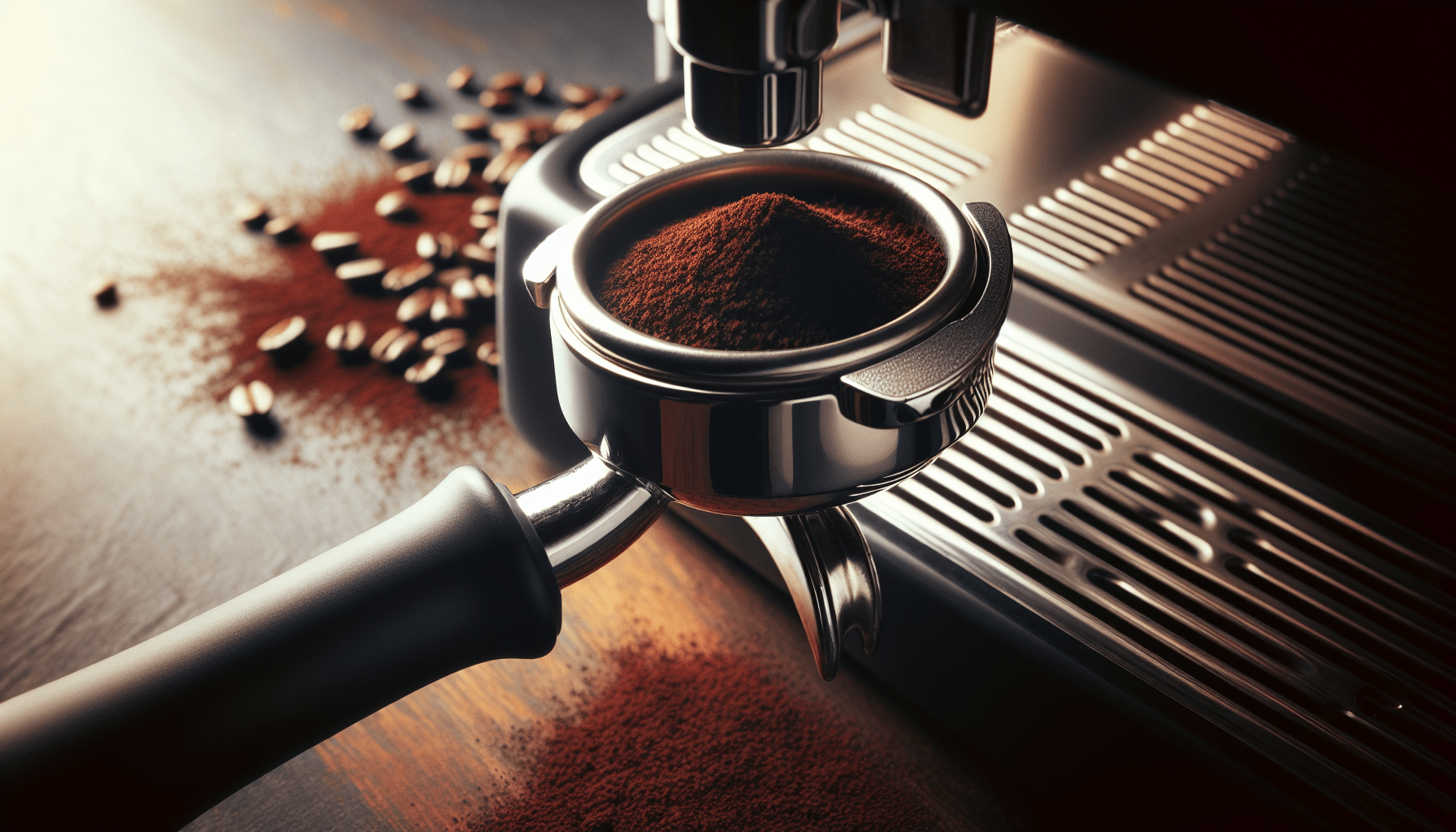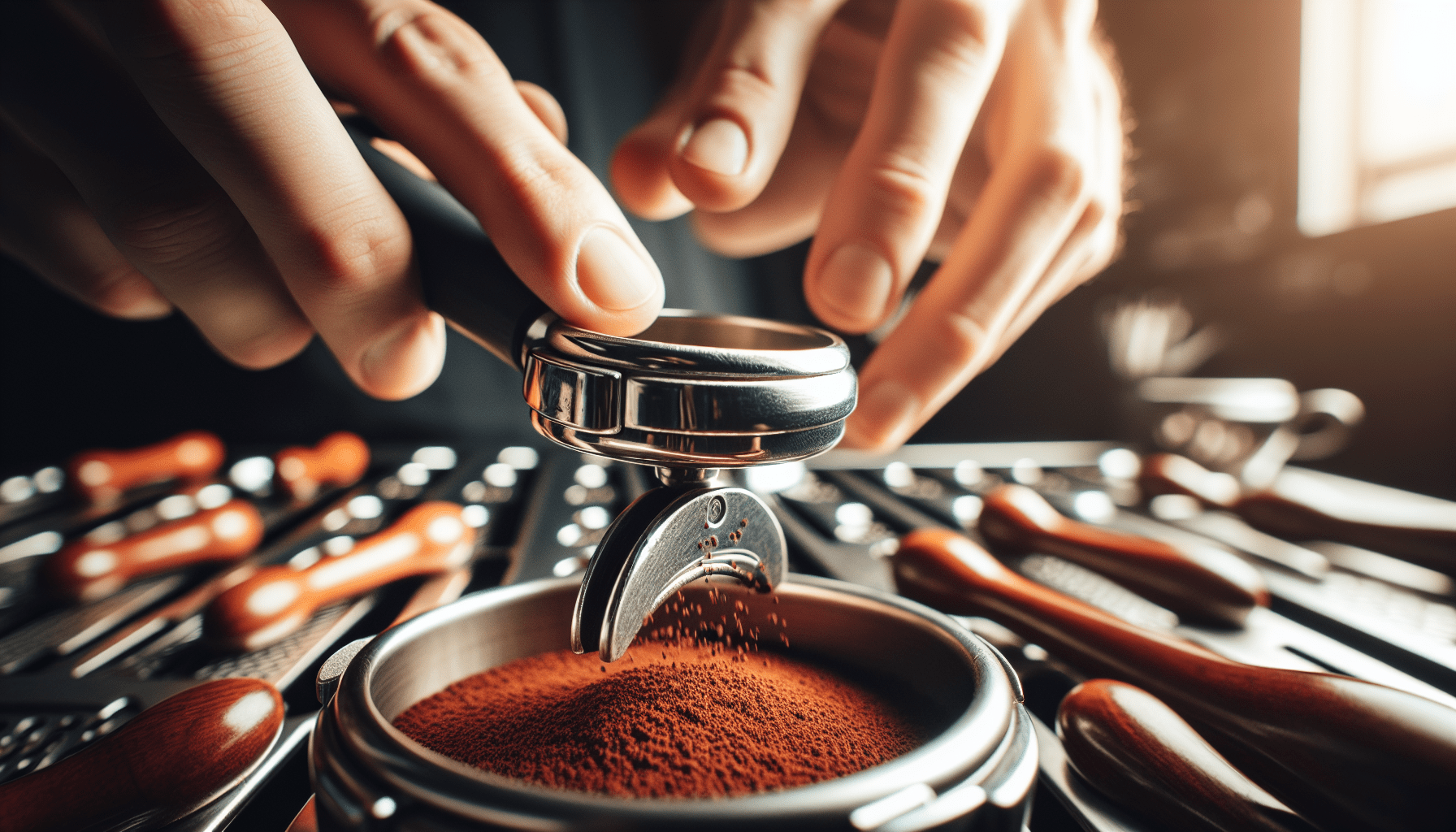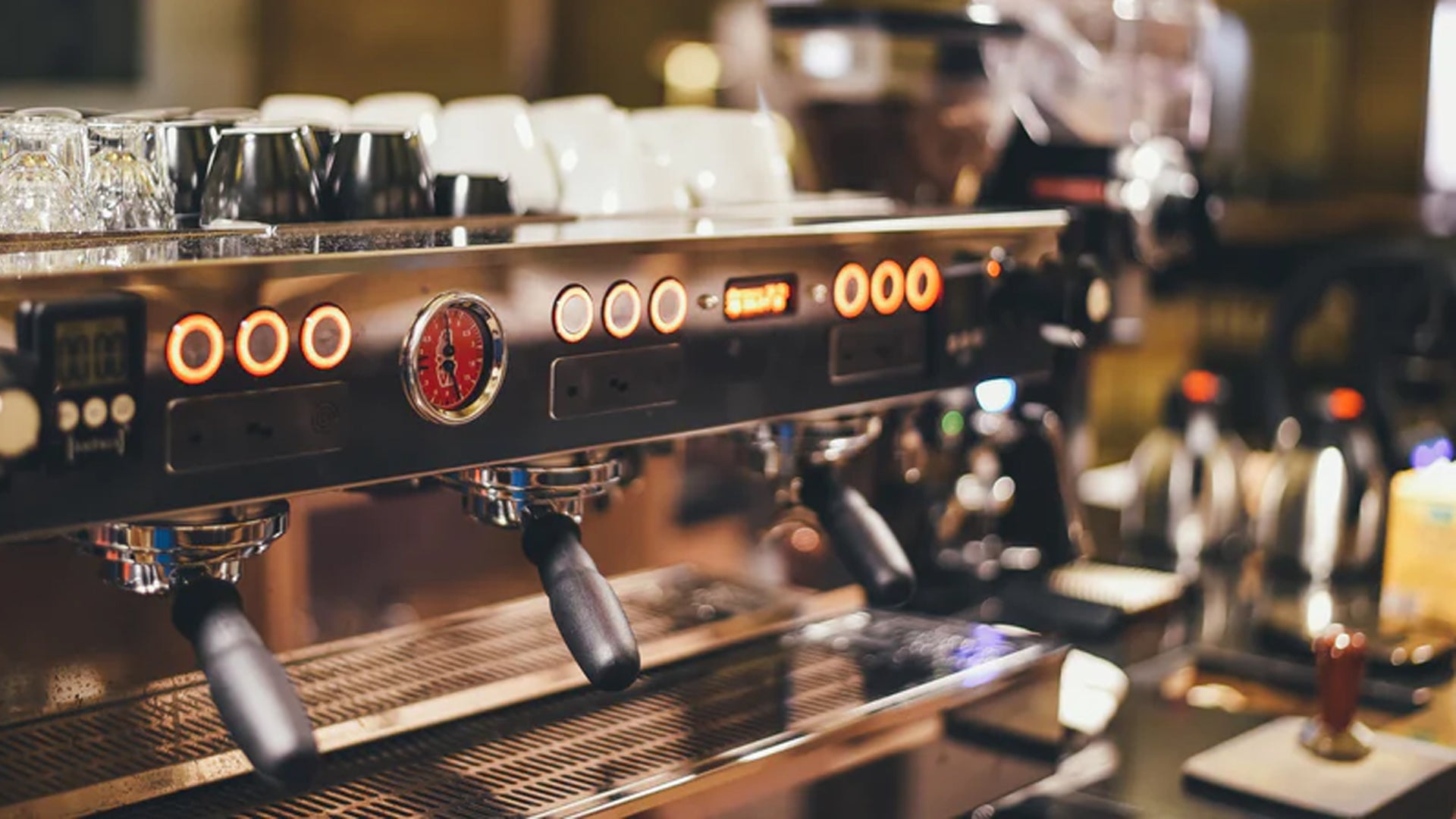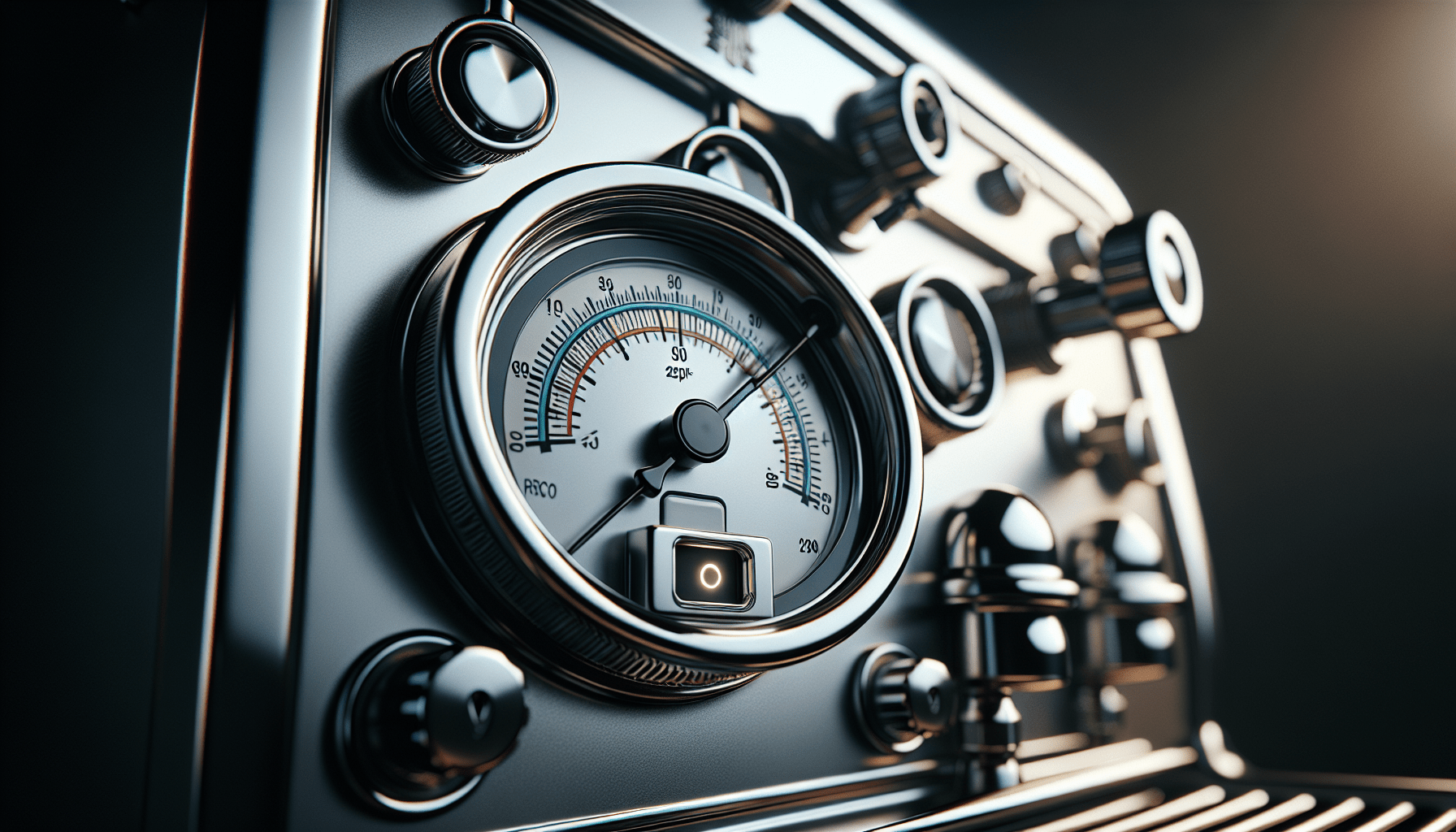Are you a coffee enthusiast who can’t start their day without a perfectly brewed cup of espresso? If so, then you must be curious about the factors that influence the quality of your beloved beverage, especially when prepared using a semi-automatic machine. From the grind size and the type of beans to the brewing time and the water temperature, numerous factors play a crucial role in the taste and aroma of your espresso. In this article, we will explore these factors in detail, helping you understand the science behind a great cup of espresso from a semi-automatic machine. So, grab your favorite mug, sit back, and let’s dive into the world of coffee perfection!
Water temperature
Effects of water temperature on espresso extraction
The temperature of the water used in espresso extraction plays a crucial role in the final flavor and quality of the espresso. When the water is too hot, it can result in a bitter and over-extracted taste. On the other hand, if the water is too cold, the extraction may be underwhelming and lacking in flavor.
Hotter water tends to extract more soluble compounds from the coffee grounds, which can lead to a stronger and more intense espresso. However, it is important to find the right balance to prevent bitterness and ensure a well-rounded flavor profile.
Ideal water temperature for espresso extraction
The ideal water temperature for extracting espresso lies between 195°F (90°C) and 205°F (96°C). Within this range, the water can effectively dissolve the flavorful compounds in the coffee grounds without extracting too many unwanted bitter compounds.
To achieve the ideal water temperature, it is recommended to preheat the espresso machine and its components, such as the portafilter and cups. This helps to ensure that the water maintains its temperature throughout the extraction process and prevents sudden drops in temperature.
It is worth noting that different coffee beans may require slight adjustments in water temperature to bring out their optimum flavor. Therefore, experimentation and adjustments may be needed to achieve the perfect extraction for different coffee varieties.
Grind size
Impact of grind size on espresso quality
Grind size is another critical factor when it comes to espresso extraction. The size of the coffee particles affects the rate of extraction, as well as the overall taste and texture of the espresso.
A finer grind size increases the surface area of the coffee particles, facilitating a faster extraction process. This can result in a more concentrated flavor and a thicker, creamier texture. On the other hand, a coarser grind size leads to a slower extraction, resulting in a milder flavor and a lighter body.
Choosing the right grind size for a semi-automatic machine
When using a semi-automatic espresso machine, it is essential to select the appropriate grind size to achieve the desired flavor profile. Generally, a medium-fine grind is recommended for espresso extraction.
However, it is crucial to consider the specific beans and the brewing equipment being used. Different grinders may have variations in their grind settings, so experimentation and adjustments may be necessary to achieve the optimal grind size for a particular machine.
Achieving the perfect grind size can be a continuous process of trial and error. It is recommended to start with a baseline setting and make small adjustments to assess the impact on the flavor and body of the espresso. This way, you can gradually fine-tune the grind size and unlock the full potential of your beans.
Coffee dose
The importance of coffee dose in espresso extraction
The amount of coffee used, also known as the coffee dose, significantly affects the strength, flavor, and overall quality of the espresso. Finding the optimal coffee dose is crucial for achieving a well-balanced and delicious espresso shot.
Both under-dosing and over-dosing can lead to undesirable results. Under-dosing, or using too little coffee, can result in weak and watery espresso with a lack of body. On the other hand, over-dosing, or using too much coffee, can lead to an overpowering and bitter taste.
Finding the optimal coffee dose for semi-automatic machines
To determine the optimal coffee dose, you can start by following the recommended guidelines provided by the coffee roaster or manufacturer. These guidelines often suggest a specific dose based on the size of the portafilter.
However, it is important to remember that these guidelines are not set in stone and may require adjustments based on personal preference and the specific coffee beans being used. Some coffee varieties may require a higher dose to achieve their full flavor potential, while others may require less.
As with other variables in espresso extraction, experimentation is key. Start with the recommended dose and make incremental adjustments to find the perfect balance of strength and flavor. Keep in mind that changes in dose should be accompanied by adjustments in grind size and extraction time to maintain consistency.
Tamping pressure
Role of tamping pressure in achieving balanced espresso extraction
Tamping is the process of applying pressure to the coffee grounds in the portafilter before extraction. While often overlooked, tamping pressure plays a crucial role in achieving a balanced and consistent extraction.
Proper tamping ensures an even distribution of coffee grounds within the portafilter, allowing the water to flow through the grounds evenly. Inconsistent tamping can result in channeling, where water finds paths of least resistance, leading to an uneven extraction and an imbalanced flavor profile.
Techniques for consistent tamping pressure
To achieve consistent tamping pressure, start by distributing the coffee grounds evenly in the portafilter by gently shaking or tapping it. This helps to prevent any pockets of uneven density, which can lead to channeling.
When applying pressure, aim for a firm and level tamp using the tamper. Apply steady downward pressure and ensure an even surface by polishing any excess coffee grounds off. The tamper should be slightly larger than the diameter of the portafilter to ensure full coverage during tamping.
Consistent practice is key to mastering tamping. It is recommended to experiment with different techniques and find the one that works best for you. Once you find your preferred method, practice it consistently to develop muscle memory and achieve a consistently balanced extraction.
Brew time
How brew time affects espresso taste and strength
The duration of the brew time, or the extraction time, directly impacts the taste, strength, and overall quality of the espresso. A longer brew time generally leads to a stronger, more intense flavor, while a shorter brew time results in a milder taste.
During the extraction process, hot water is exposed to the coffee grounds, extracting various compounds. The speed at which these compounds are extracted can be controlled by adjusting the brew time. However, it is important to find the right balance to avoid over-extraction or under-extraction.
Controlling brew time for better espresso quality
Monitoring and controlling the brew time is crucial to achieving the desired flavor profile. The ideal extraction time for espresso typically ranges between 25 and 30 seconds, but it can vary depending on factors such as coffee dose, grind size, and water temperature.
To optimize brew time, consider the flow rate of the espresso. If the extraction is too fast, the brew time may be too short, resulting in a weak and under-extracted espresso. Conversely, if the extraction is too slow, the brew time may be too long, leading to a bitter and over-extracted taste.
Adjusting the grind size and coffee dose can help control the brew time. Finer grind sizes and higher coffee doses generally increase the brew time, while coarser grind sizes and lower coffee doses decrease it. It is important to make small adjustments and keep track of the results to achieve consistency and refine the extraction process.
Water quality
Importance of water quality in espresso extraction
Water quality is often overlooked but has a significant impact on the flavor and quality of espresso. The minerals, chemicals, and impurities present in water can affect the extraction process and alter the taste of the final espresso.
Impurities such as chlorine, heavy metals, and organic compounds can impart off-flavors and aromas to the coffee. Additionally, minerals in water, such as calcium and magnesium, interact with the coffee compounds during extraction, enhancing or inhibiting their solubility.
Filtering and conditioning water for optimal results
To ensure optimal water quality for espresso extraction, filtering and conditioning the water is highly recommended. Using a water filter or filtration system can help remove impurities and chemicals, resulting in cleaner and better-tasting espresso.
Water conditioning refers to adjusting the mineral content of the water to achieve an optimal balance for espresso extraction. This can be done through the use of water softeners or by using bottled water with known mineral content.
Experimentation may be necessary to find the right balance of minerals for different coffee beans. Some beans may benefit from softer water, while others may require a slightly harder water composition. Keep track of the results and adjust accordingly to achieve the best water quality for your espresso extraction.
Machine maintenance
Impact of machine cleanliness on espresso flavor
The cleanliness and maintenance of your semi-automatic machine significantly impact the flavor and quality of the espresso it produces. Over time, coffee residues, oils, and mineral buildup can accumulate in the machine, affecting the taste and performance.
Unclean machines can lead to off-flavors, inconsistent extraction, and reduced brewing efficiency. The oils from previous extractions can become rancid and impart unpleasant flavors to subsequent shots. Additionally, mineral buildup can clog the internal components, hindering proper water flow and heat distribution.
Regular maintenance tips for semi-automatic machines
To maintain optimal flavor and performance, regular cleaning and maintenance of the machine are essential. Here are some key maintenance tips for semi-automatic machines:
-
Backflush regularly: Backflushing involves cleaning the group head and portafilter by running a cleaning solution through the machine. This helps remove coffee residues and oils that can impact the taste.
-
Clean the steam wand: After each use, purge the steam wand and wipe it clean with a damp cloth to prevent the buildup of milk residues.
-
Descale periodically: Descaling removes mineral deposits that can accumulate in the internal components of the machine. Follow the manufacturer’s instructions and use a descaling solution suited for your machine.
-
Empty and clean the drip tray: The drip tray collects water and coffee residue, so regular emptying and cleaning prevent the growth of bacteria and maintain cleanliness.
By incorporating these maintenance practices into your routine, you can ensure a clean and well-functioning machine that consistently delivers high-quality espresso.
Bean freshness
Effects of bean freshness on espresso taste
The freshness of the coffee beans used in espresso extraction has a significant impact on the taste and aroma of the final espresso. Coffee beans undergo various chemical reactions after roasting, and these reactions continue over time, affecting the flavor profile.
Freshly roasted beans are at their peak flavor and aroma potential. The subtle nuances and vibrant flavors are most pronounced during the first few weeks after roasting. As time passes, the beans gradually lose their freshness, and the flavors can become stale or muted.
Storing and using freshly roasted beans
To ensure the best flavor and quality in your espresso, it is crucial to use freshly roasted beans. Here are some tips for storing and using them:
-
Purchase in small quantities: Buy coffee beans in small quantities to ensure freshness. Aim to use them within two to three weeks of the roast date.
-
Store properly: Store the beans in an airtight container in a cool, dark place. Avoid exposure to sunlight, heat, and moisture, as these can accelerate the staling process.
-
Grind just before brewing: Grind the beans just before brewing to preserve the flavor compounds. Oxygen exposure after grinding can cause rapid flavor deterioration.
By investing in freshly roasted beans and taking proper care of them, you can enhance the flavor and aroma of your espresso and experience the true essence of the coffee beans.
Consistency in shot pulling
The significance of consistent shot pulling technique in espresso quality
Consistency in shot pulling, the process of extracting espresso, is crucial in achieving a high-quality espresso. The way the espresso is extracted can affect factors such as flavor, strength, body, and crema production.
Inconsistent tamping pressure, brew time, grind size, and coffee dose can lead to variations in the extraction process, resulting in different taste profiles from shot to shot. To ensure consistent quality, it is important to hone your shot pulling technique and maintain consistency across all variables.
Training and improving shot pulling skills
Developing shot pulling skills requires practice, patience, and attention to detail. Here are some tips to improve consistency in shot pulling:
-
Training courses: Consider attending espresso training courses or workshops to learn proper shot pulling techniques from experts. These courses can provide valuable insights into variables such as grind size, tamping pressure, and brew time.
-
Practice with intention: Focus on mastering one variable at a time. Start by perfecting your tamping technique, then move on to refining the grind size and brew time. Track your progress and make adjustments as needed.
-
Use a timer: Use a timer to measure the brew time accurately. This helps maintain consistency and allows you to make adjustments if necessary.
-
Taste and analyze: Regularly taste and analyze your shots to assess the flavor, strength, and consistency. This feedback loop helps you identify areas for improvement and continue refining your shot pulling skills.
With consistent practice and attention to detail, you can develop the skills needed to consistently pull high-quality espresso shots and unlock the full potential of your beans.
Experimentation and adjustments
Role of experimentation and adjustments in perfecting espresso extraction
Experimentation and adjustments are vital in the journey to perfecting espresso extraction. Each coffee bean variety and roast may require different variables and techniques to achieve the desired flavor profile. Through continuous experimentation and refinement, you can unlock the true potential of your espresso.
Keeping a log and tracking results for refinement
To facilitate experimentation and adjustments, it is important to keep a log and track the results of your extractions. Record variables such as coffee dose, grind size, water temperature, brew time, and tasting notes for each shot pulled.
By noting the impact of different variables on the flavor and quality of the espresso, you can make informed adjustments and refine your extraction process. Over time, patterns will emerge, and you will gain a better understanding of how each variable contributes to the overall taste.
Stay open to trying new techniques, adjusting variables, and exploring different coffee beans. Embrace the journey of experimentation and refinement as you strive to perfect your espresso extraction and create a truly exceptional cup of coffee.




